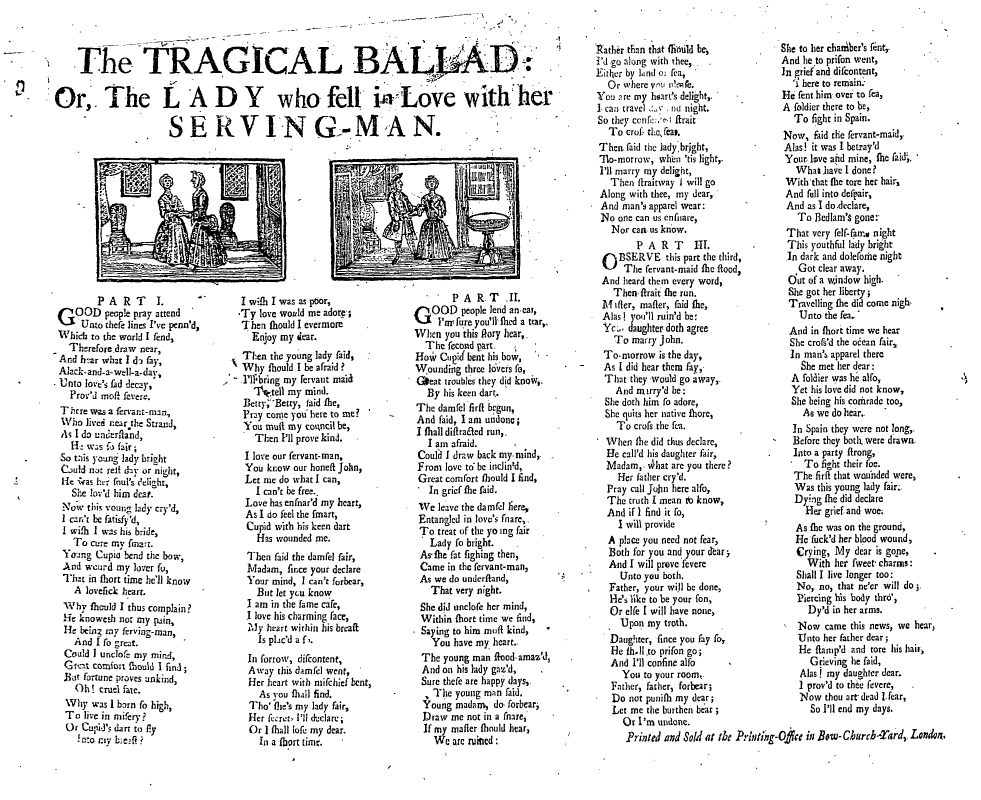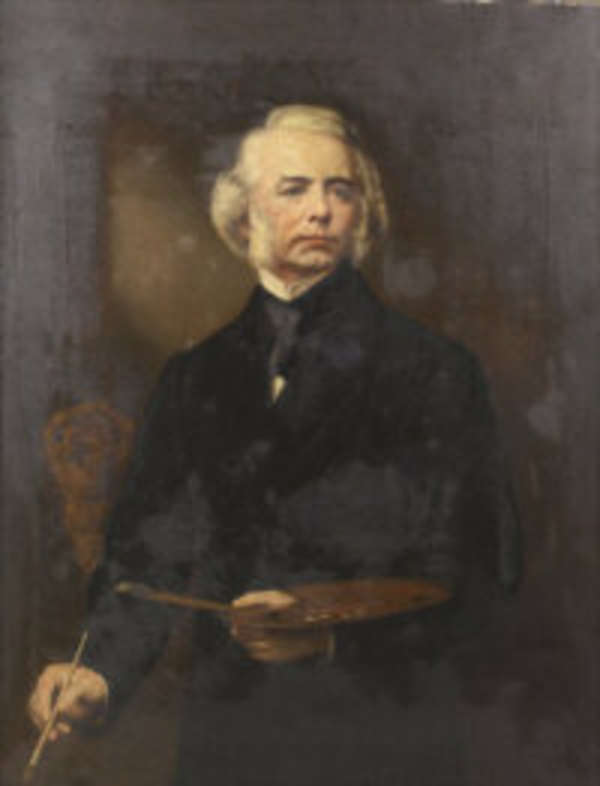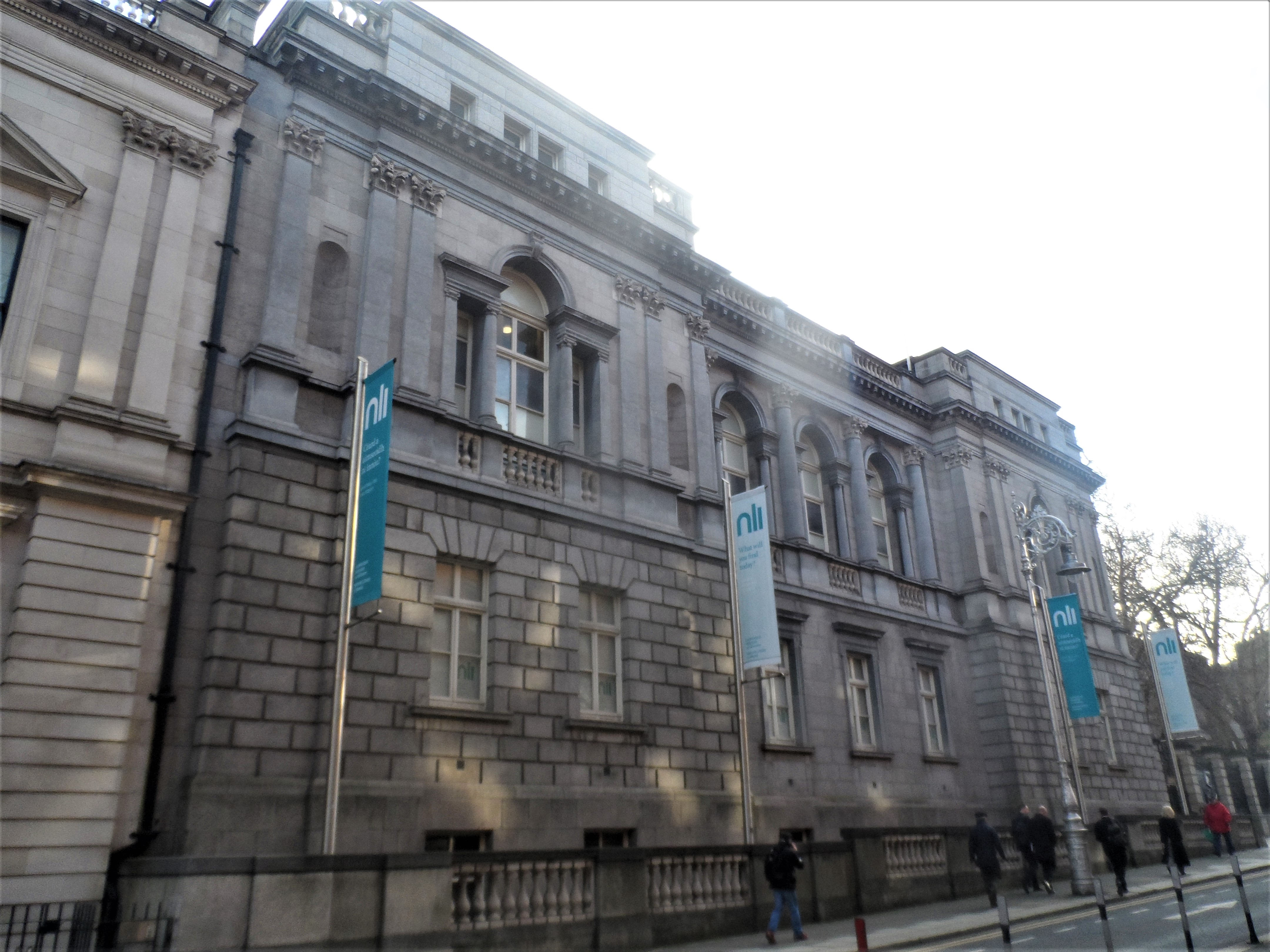|
Charles Haliday
Charles Haliday (1789–1866) was an Irish public health reformer, historian and antiquary who made significant contributions to the study of the history of Dublin, being particularly interested in the Scandinavian antiquities of the city. Early life and family Charles Halliday was born in Carrick-on-Suir in County Tipperary in 1789. His father was an apothecary, William Halliday. He was the second of four sons. From 1809 to 1812, Haliday worked in London as a clerk in Lubbock's Bank, and later working as a commission agent for John Norcot D'Esterre. Haliday returned to Dublin after the death of his elder brother, William, and took over the business William had been running on behalf of his father-in-law, Finlay Alder, trading in timber and bark on Arran Quay. From around 1825, he started to spell his name Haliday. Haliday married Mary Hayes of Mountmellick. Career In 1832, when cholera first appeared in Dublin, he became a campaigner for improved living conditions among th ... [...More Info...] [...Related Items...] OR: [Wikipedia] [Google] [Baidu] |
Kingdom Of Ireland
The Kingdom of Ireland ( ga, label=Classical Irish, an Ríoghacht Éireann; ga, label= Modern Irish, an Ríocht Éireann, ) was a monarchy on the island of Ireland that was a client state of England and then of Great Britain. It existed from 1542 until 1801. It was ruled by the monarchs of England and then of Great Britain, and administered from Dublin Castle by a viceroy appointed by the English king: the Lord Deputy of Ireland. It had a parliament, composed of Anglo-Irish and native nobles. From 1661 until 1801, the administration controlled an army. A Protestant state church, the Church of Ireland, was established. Although styled a kingdom, for most of its history it was, ''de facto'', an English dependency.MacInnes, Allan. ''Union and Empire: The Making of the United Kingdom in 1707''. Cambridge University Press, 2007. p.109 This status was enshrined in Poynings' Law and in the Declaratory Act of 1719. The territory of the kingdom comprised that of the former ... [...More Info...] [...Related Items...] OR: [Wikipedia] [Google] [Baidu] |
Street Literature
Street literature is any of several different types of publication sold on the streets, at fairs and other public gatherings, by travelling hawkers, pedlars or chapmen, from the fifteenth to the nineteenth centuries. Robert Collison's account of the subject describes street literature as the "forerunner of the popular press". Leslie Shepard's "History of Street Literature" identifies a range of different publications as indicated by his subtitle: "The Story of Broadside Ballads, Chapbooks, Proclamations, News-Sheets, Election Bills, Tracts, Pamphlets, Cocks, Catchpennies, and Other Ephemera". Street literature therefore includes several different printed formats and publication types. The main formats are: Broadside ballad Broadside ballads are traditional ballads printed on one side of a full sheet or half sheet of paper, often in landscape orientation. Intended to be pasted on to walls for public consultation. Chapbook Chapbooks were small, paper-covered booklets, usually p ... [...More Info...] [...Related Items...] OR: [Wikipedia] [Google] [Baidu] |
19th-century Irish Historians
The 19th (nineteenth) century began on 1 January 1801 ( MDCCCI), and ended on 31 December 1900 ( MCM). The 19th century was the ninth century of the 2nd millennium. The 19th century was characterized by vast social upheaval. Slavery was abolished in much of Europe and the Americas. The First Industrial Revolution, though it began in the late 18th century, expanding beyond its British homeland for the first time during this century, particularly remaking the economies and societies of the Low Countries, the Rhineland, Northern Italy, and the Northeastern United States. A few decades later, the Second Industrial Revolution led to ever more massive urbanization and much higher levels of productivity, profit, and prosperity, a pattern that continued into the 20th century. The Islamic gunpowder empires fell into decline and European imperialism brought much of South Asia, Southeast Asia, and almost all of Africa under colonial rule. It was also marked by the collapse of the large ... [...More Info...] [...Related Items...] OR: [Wikipedia] [Google] [Baidu] |
1866 Deaths
Events January–March * January 1 ** Fisk University, a historically black university, is established in Nashville, Tennessee. ** The last issue of the abolitionist magazine '' The Liberator'' is published. * January 6 – Ottoman troops clash with supporters of Maronite leader Youssef Bey Karam, at St. Doumit in Lebanon; the Ottomans are defeated. * January 12 ** The '' Royal Aeronautical Society'' is formed as ''The Aeronautical Society of Great Britain'' in London, the world's oldest such society. ** British auxiliary steamer sinks in a storm in the Bay of Biscay, on passage from the Thames to Australia, with the loss of 244 people, and only 19 survivors. * January 18 – Wesley College, Melbourne, is established. * January 26 – Volcanic eruption in the Santorini caldera begins. * February 7 – Battle of Abtao: A Spanish naval squadron fights a combined Peruvian-Chilean fleet, at the island of Abtao, in the Chiloé Archipelago of southern Chile. * Fe ... [...More Info...] [...Related Items...] OR: [Wikipedia] [Google] [Baidu] |
1789 Births
Events January–March * January – Emmanuel Joseph Sieyès publishes the pamphlet '' What Is the Third Estate?'' ('), influential on the French Revolution. * January 7 – The 1788-89 United States presidential election and House of Representatives elections are held. * January 9 – Treaty of Fort Harmar: The terms of the Treaty of Fort Stanwix (1784) and the Treaty of Fort McIntosh, between the United States Government and certain native American tribes, are reaffirmed, with some minor changes. * January 21 – The first American novel, ''The Power of Sympathy or the Triumph of Nature Founded in Truth'', is printed in Boston, Massachusetts. The anonymous author is William Hill Brown. * January 23 – Georgetown University is founded in Georgetown, Maryland (today part of Washington, D.C.), as the first Roman Catholic college in the United States. * January 29 – In Vietnam, Emperor Quang Trung crushes the Chinese Qing forces in Ng ... [...More Info...] [...Related Items...] OR: [Wikipedia] [Google] [Baidu] |
CBC Monkstown
Christian Brothers College, Monkstown Park (or CBC Monkstown Park) is a private fee-paying Catholic school and Independent Junior school, founded in 1856 in Monkstown, Dún Laoghaire, County Dublin, Ireland. The college arrived at Monkstown Park in 1950 from Eblana Avenue in Dún Laoghaire via a short stint on Tivoli Road. As of September 2018, it was in its 69th academic year of existence at Monkstown Park, the 162nd overall. The intended mission of the college's former patron, the Congregation of the Christian Brothers established in 1802 by Edmund Ignatius Rice, was the education of poor boys in Ireland by providing them with basic levels of literacy. This was the broad aim of the school when it opened its doors in 1856 at Eblana Avenue in what was then known as Kingstown (now Dún Laoghaire), a port town south of Dublin City. As the years went by, the aims of the Christian Brothers got broader and so did those of the Dún Laoghaire school. By the 1920s, the school was pre ... [...More Info...] [...Related Items...] OR: [Wikipedia] [Google] [Baidu] |
Stephen Catterson Smith
Stephen Catterson Smith (12 March 1806 – 30 May 1872) was an English portrait-painter and president of the Royal Hibernian Academy. Biography Smith was born in Skipton, North Yorkshire, the son of Joseph Smith, artist and coach-painter, and Anne, his wife, daughter of Stephen Catterson of Gawflat, Yorkshire. His parents moved early in his life to Kingston upon Hull, and at the age of about sixteen Smith went to London to support himself by the practical study of art. Obtaining admission to the schools of the Royal Academy, he distinguished himself in the competitions there, and afterwards studied in Paris. He first attracted notice by his skill in drawing portraits in black chalk, many of these being published in lithography by Richard James Lane. He made drawings of this class for H.R.H. the Duchess of Kent, of Queen Victoria (as princess), the duchess herself, the King of Hanover, and other members of the royal family. He then removed for a few years to Yeovil in Somerset ... [...More Info...] [...Related Items...] OR: [Wikipedia] [Google] [Baidu] |
National Library Of Ireland
The National Library of Ireland (NLI; ga, Leabharlann Náisiúnta na hÉireann) is the Republic of Ireland's national library located in Dublin, in a building designed by Thomas Newenham Deane. The mission of the National Library of Ireland is 'To collect, preserve, promote and make accessible the documentary and intellectual record of the life of Ireland and to contribute to the provision of access to the larger universe of recorded knowledge.' The library is a reference library and, as such, does not lend. It has a large quantity of Irish and Irish-related material which can be consulted without charge; this includes books, maps, manuscripts, music, newspapers, periodicals and photographs. Included in their collections is material issued by private as well as government publishers. The Chief Herald of Ireland and National Photographic Archive are attached to the library. The library holds exhibitions and holds an archive of Irish newspapers. It is also the ISSN National ... [...More Info...] [...Related Items...] OR: [Wikipedia] [Google] [Baidu] |
John Patrick Prendergast
John Patrick Prendergast (7 March 1808 – 6 February 1893) was an Irish land agent and historian. Life Born on 7 March 1808, at 37 Dawson Street, Dublin, he was eldest son of Francis Prendergast (1768–1846), registrar of the court of chancery of Ireland, by Esther ( Patrick; 1774–1846), eldest daughter of John Patrick, of 27 Palace Row, Dublin. Educated in England at Reading grammar school under Richard Valpy, he graduated at Trinity College Dublin, in 1825, and was called to the Irish Bar in 1830. In 1836 Prendergast succeeded his father and grandfather in the agency of Lord Clifden's estates, which he administered for many years. His experiences made him an advocate of tenant right and a supporter of the early land reformers in Ireland. Prendergast died in Dublin on 6 February 1893, aged 84. Works In 1840 Prendergast was commissioned to make some pedigree researches in County Tipperary, which led him to a study of the settlement of Ireland at the restoration of Charles ... [...More Info...] [...Related Items...] OR: [Wikipedia] [Google] [Baidu] |
Carrickbrennan Churchyard
Carrickbrennan Churchyard () located on Carrickbrennan Road, Monkstown, County Dublin, Ireland is a graveyard that can still be seen today, but is no longer in use. It is notable as the burial place of many people who perished in local maritime disasters. The graveyard stands beside the grounds of Monkstown Park, former estate of Lord Ranelagh and latterly the historian Charles Haliday, now used as rugby pitches by CBC Monkstown Park. History There used to be a medieval monastery at this site dedicated to St. Mochonna, a 6th-century Bishop from Holmpatrick, Skerries. The monks were Cistercian and the monastery was part of the chapter of St. Mary's Abbey, Dublin. The building fell to ruin and was replaced in 1668 by a church built by Edward Corker. Today this church lies in ruins, but in the 19th century the building was modified somewhat for a watchman's house to deter body snatchers.Igoe, Vivien (2001). "Dublin Burial Grounds & Graveyards", Wolfhound Press, p47-52, The nea ... [...More Info...] [...Related Items...] OR: [Wikipedia] [Google] [Baidu] |
Charles Haliday (1789-1866), Carrickbrennan Cemetery
Charles Haliday (1789–1866) was an Irish public health reformer, historian and antiquary who made significant contributions to the study of the history of Dublin, being particularly interested in the Scandinavian antiquities of the city. Early life and family Charles Halliday was born in Carrick-on-Suir in County Tipperary in 1789. His father was an apothecary, William Halliday. He was the second of four sons. From 1809 to 1812, Haliday worked in London as a clerk in Lubbock's Bank, and later working as a commission agent for John Norcot D'Esterre. Haliday returned to Dublin after the death of his elder brother, William, and took over the business William had been running on behalf of his father-in-law, Finlay Alder, trading in timber and bark on Arran Quay. From around 1825, he started to spell his name Haliday. Haliday married Mary Hayes of Mountmellick. Career In 1832, when cholera first appeared in Dublin, he became a campaigner for improved living conditions among t ... [...More Info...] [...Related Items...] OR: [Wikipedia] [Google] [Baidu] |
Irish Rebellion Of 1798
The Irish Rebellion of 1798 ( ga, Éirí Amach 1798; Ulster-Scots: ''The Hurries'') was a major uprising against British rule in Ireland. The main organising force was the Society of United Irishmen, a republican revolutionary group influenced by the ideas of the American and French revolutions: originally formed by Presbyterian radicals angry at being shut out of power by the Anglican establishment, they were joined by many from the majority Catholic population. Following some initial successes, particularly in County Wexford, the uprising was suppressed by government militia and yeomanry forces, reinforced by units of the British Army, with a civilian and combatant death toll estimated between 10,000 and 50,000. A French expeditionary force landed in County Mayo in August in support of the rebels: despite victory at Castlebar, they were also eventually defeated. The aftermath of the Rebellion led to the passing of the Acts of Union 1800, merging the Parliament of Ireland int ... [...More Info...] [...Related Items...] OR: [Wikipedia] [Google] [Baidu] |
%2C_Carrickbrennan_Cemetery.jpg)








